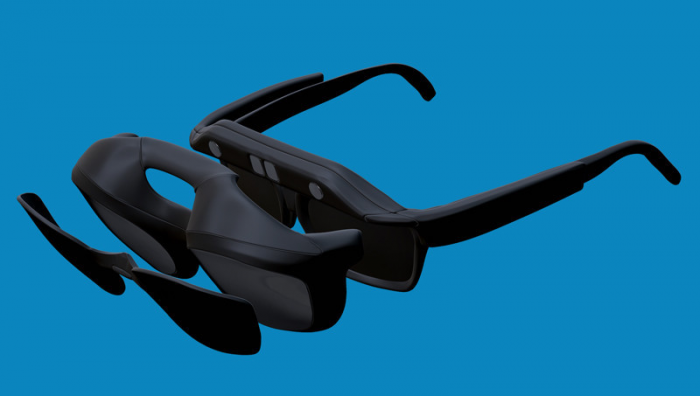Having just announced a large injection of cash in the form of a $15 million Series A investment, AR glasses company CastAR says that the funds will help them fulfill commitments to their Kickstarter backers and push forward to a full consumer launch.
See Also: AR Glasses Company CastAR Lands $15 Million Investment Led by Android Co-founder’s Firm
CastAR was born out of a late 2013 Kickstarter which raised an impressive $1 million to bring a development kit of the curious AR glasses to life. As we described in our prior article on the subject, the CastAR glasses work unlike many other AR and VR headsets on the market:
The CastAR glasses are rather novel in the world of AR and VR. Rather than using a near-eye display, the glasses have mounted projectors which bounce light off of a special retro-reflective material and back to the user through active-shutter glasses. Tracking the user’s position, the projection is updated in real-time to create the appearance of holographic content, effectively turning the material into a stereoscopic AR display. Because the retro-reflective material bounces light back to its origin, multiple users can use the same surface simultaneously without cross-talk, enabling cooperative interactions in the same physical space. The company has also touted a ‘VR clip-on’ accessory which would turn the AR headset into a VR display with a wide field of view, though details of the experience have been hard to come by.
The goal of the CastAR Kickstarter was to bring a development kit of the glasses to market so that devs could start exploring exciting applications for the platform. In addition to the CastAR development kit, the Kickstarter had tiers for a prototype development kit that would ship even sooner. The campaign had rather ambitious goals for shipping: the first prototype development kits were slated for April, 2014, while the final development kits were expected to ship in September, 2014.

Like many Kickstarters, estimated shipping dates came and went as the team uncovered new challenges in the complex undertaking of making new hardware (not to mention the software to support it). The first prototype development kits started shipping out some seven months after their forecasted date and are still being fulfilled. Meanwhile, the final development kits are going on 11 months delayed.
CastAR says their newly announced investment will not only help them fulfill their Kickstarter commitments for development kits of their AR glasses, but also take them toward a full commercial launch of the product. We spoke with CastAR CEO David Henkel-Wallace to learn about the new CastAR release date timeline.
The latest, says Henkel-Wallace, is that the company has shipped about two-thirds of the prototype development kits. These units are hand-assembled and the company expects that all Kickstarter orders of the prototype development kits will ship out by the end of 2015.

As for the final CastAR development kit, Henkel-Wallace says that they ship out in early 2016. The final consumer version of CastAR will land in late 2016 or early 2017.
Thanks to feedback and continued iteration with the prototype development kits, Henkel-Wallace says that the AR glasses have seen improvements in tracking and fidelity. While the display is the same resolution, improvements to the projection system results in a sharper picture. He further says that CastAR has “completely revamped tracking algorithms” that’s “more locked to the table.” The wand input device has also been reworked according to Henkel-Wallace, and is now based on the same tracking tech as the glasses themselves.
The improvements have come since we last saw the CastAR prototype development kit at CES 2015, so we’ll be looking forward to seeing the performance of the latest version of the headset.
See Also: Hands-On with CastAR Early Dev Kit and Through-Glasses Gameplay (video)
Pre-orders for the CastAR headset remain open starting at $400 for the development kit, $85 for the VR Clip-on, and $65 for the Wand Controller.







